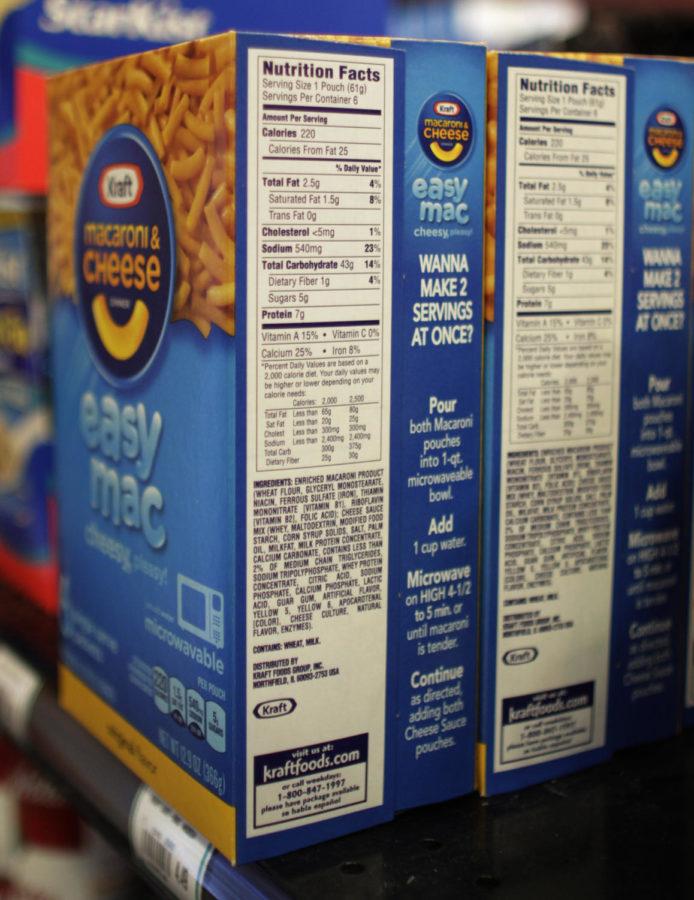FDA considers changes for nutrition labels
Kelby Wingert/Iowa State Daily
The Food and Drug Administration has proposed changes for nutrition fact labels to help educate the public on healthy eating habits and prevent obesity.
March 10, 2014
The Food and Drug Administration has proposed changes for nutrition fact labels on food products to help educate the public on health-related habits and America’s fight against obesity.
The first thing that may pop out to consumers on the proposed label is the calorie count, as well as servings per container. The plans propose them to be in a larger, bolded font. This is supposed to help the consumer become more aware of the portion size of a given product.
Lisa Nolting, program coordinator forIowa State Dining Services, said she thinks the newly proposed nutrition labels will have both pros and cons.
“Calories are more visible, and the label is easier to read, in my opinion,” Nolting said. “But it may take some education for the public to be able to understand the new label.”
Students are some of these consumers. It is a matter of whether or not they will follow through with changing their portion intake.
“It would be an interesting research project,” Nolting said.
Ruth Litchfield, associate professor of food science and human nutrition, said she believes there will also be a reaction on the changed nutrition labels including the calories being displayed in a larger, bolder font.
“The number of calories per serving is quite prominent,” Litchfield said. “The Dietary Guidelines for Americans identifies four nutrients of concern for Americans: calcium, vitamin D, potassium and fiber.”
The FDA has changed what nutrients will be displayed on the lower section of the nutrition facts panel, as well.
Instead of vitamin A and vitamin C to be required on label counts, it is now optional. Vitamin D and potassium will take their places as the new requirement.
“These are the nutrients most likely to be lacking in the American diet,” Litchfield said.
Nolting also said she agrees that most Americans are not getting enough vitamin D and potassium in their daily diets.
Attention will also be drawn to sugars in the new layout of the label. Under “sugars,” added sugars, like manufactured, non-natural sugars, will be receiving their own line on the label.
“Some sugar is naturally occurring, such as that in fruit and even unflavored milk. It is confusing for consumers who don’t know the difference between added and natural sugar,” Nolting said.
While some titles are being added or replaced, other titles are being removed.
According to the FDA, “calories from fat” will also be taken off of the proposed labels. The types of fat like “total fat,” “saturated fat” and “trans fat” have more importance than the total of calories from fat itself.
Since the proposed label has not yet been approved, the FDA is accepting comments and revisions for up to 90 days.
The percentage of daily values will be moving to the left side of the label, too. The FDA hopes this shift will help better inform the public on what is appropriate for nutritional totals each day.
ISU students can become more aware of the percentage of their ‘daily values’ from the Department of Agriculture, too.
“[The USDA] has nutrition information and education available at http://www.choosemyplate.gov,” Nolting said.
MyPlate can raise awareness about eating healthfully by informing visitors about the five food groups, along with visuals and illustrations.







